
Peptide Science
Scope & Guideline
Connecting researchers through groundbreaking peptide discoveries.
Introduction
Aims and Scopes
- Peptide Synthesis and Modification:
The journal emphasizes innovative methods for synthesizing peptides, including novel chemical ligation techniques, modifications to enhance stability and activity, and the development of new synthetic strategies. - Bioactive Peptides and Therapeutics:
A core area of focus is the investigation of bioactive peptides with therapeutic potential, including their roles as antimicrobial agents, cancer therapeutics, and their use in vaccine development. - Computational Analysis and Molecular Modeling:
The use of computational tools for predicting peptide behavior, interactions, and properties is a significant aspect, including in silico studies for drug design and molecular dynamics simulations. - Peptide-Based Materials and Nanotechnology:
Research on the development of peptide-based materials, including hydrogels and nanostructures, highlights the journal's commitment to exploring peptides in materials science, particularly for biomedical applications. - Mechanisms of Action and Structural Biology:
Understanding the molecular mechanisms underlying the actions of peptides, including their interactions with proteins and cellular targets, is a key research focus, contributing to the field of structural biology.
Trending and Emerging
- Nanotechnology and Peptide Engineering:
The integration of nanotechnology with peptide science is gaining momentum, with increasing research on how engineered peptides can interact with nanomaterials to enhance therapeutic efficacy and delivery. - In Silico Approaches and Computational Design:
There is a rising trend in utilizing computational methods for peptide design and analysis, particularly in drug discovery and the development of peptide-based therapeutics against complex diseases. - Peptides in COVID-19 Research:
The journal has seen a surge in publications addressing the role of peptides in combating COVID-19, including their potential as therapeutic agents or vaccines, reflecting the urgent need for solutions to global health crises. - Antimicrobial Peptides Against Drug Resistance:
Research focusing on antimicrobial peptides as a response to the growing problem of antibiotic resistance is increasingly prominent, highlighting their potential as alternatives to conventional antibiotics. - Structural Biology and Peptide Interactions:
An emerging theme is the detailed study of peptide interactions at the molecular level, utilizing advanced techniques to understand their structural biology and functional mechanisms in biological systems.
Declining or Waning
- Traditional Antibiotics and Peptide Combinations:
Research on combining traditional antibiotics with peptides has decreased, possibly due to the growing emphasis on developing novel peptide therapeutics that do not rely on existing antibiotic frameworks. - Peptide Applications in Non-Biomedical Fields:
There has been a noticeable decline in the exploration of peptides in non-biomedical applications, such as industrial processes or environmental science, as the journal shifts its focus more towards biomedical applications. - Basic Research on Peptide Chemistry:
The foundational studies on peptide chemistry, while still important, seem to be less frequently published, as the trend moves towards more applied research that demonstrates practical applications of peptide science.
Similar Journals
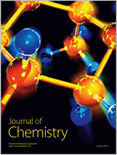
Journal of Chemistry
Shaping the Future of Chemical ScienceJournal of Chemistry, published by Hindawi Ltd, serves as a critical platform for advancing knowledge in the field of chemistry, particularly in its miscellaneous sub-disciplines. With an impressive 2023 Scopus Rank of #123 out of 408 and positioned in the Q2 quartile, this journal exemplifies a robust academic rigor that appeals to researchers, professionals, and students alike. It features articles related to innovative chemical research and developments, catering to a diverse audience eager to contribute to the growing body of literature in the chemical sciences. The journal has been operational from 2013 to 2024, and its Open Access model ensures that findings are easily accessible to a global audience, fostering collaboration and knowledge sharing. With a commitment to quality and relevance, the Journal of Chemistry continues to play a significant role in shaping contemporary chemical research and education.

RUSSIAN JOURNAL OF BIOORGANIC CHEMISTRY
Unveiling Complex Interactions in Bioorganic ChemistryRussian Journal of Bioorganic Chemistry (ISSN: 1068-1620, E-ISSN: 1608-330X), published by MAIK Nauka/Interperiodica/Springer, serves as a vital resource for researchers and professionals in the fields of bioorganic chemistry, biochemistry, and organic chemistry. With a focus on the integration of organic chemistry principles with biological processes, this journal aims to disseminate significant findings and advancements from both theoretical and practical perspectives. Although currently not open access, the journal retains a dedication to high-quality, peer-reviewed content, contributing to its reputation within the academic community. The 2023 Scopus rankings position it within the Q4 category for both biochemistry and organic chemistry, indicating its critical niche within these disciplines amid a competitive landscape. Since its inception in 1996, the journal has continued to evolve, providing enriching insights and fostering collaborations among scholars and practitioners alike, with publication converging up to the year 2024. By exploring complex biomolecular interactions and the synthesis of biologically relevant compounds, the Russian Journal of Bioorganic Chemistry remains a significant platform for advancing knowledge and innovation in the life sciences.
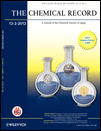
CHEMICAL RECORD
Bridging Gaps with Cutting-Edge Chemical ResearchThe Chemical Record is a prestigious peer-reviewed journal published by WILEY-V C H VERLAG GMBH, focusing on innovative research and developments across the diverse and evolving fields of chemistry and biochemistry. With an esteemed 2023 Impact Factor and recognized as a Q1 journal in several categories—including Biochemistry, Chemical Engineering, and Materials Chemistry—The Chemical Record stands as a critical resource for researchers, professionals, and students aiming to disseminate and acquire knowledge in these disciplines. The journal's engaging scope covers contemporary topics and fosters collaboration within the global scientific community, ensuring accessibility to cutting-edge research. By publishing articles that meet the highest standards of scholarship, it has earned a significant place within the academic ecosystem, as reflected in its strong Scopus rankings. Although The Chemical Record operates without open access, it remains deeply committed to advancing the field of chemistry through rigorous and impactful publications that bridge gaps between theory and practice.
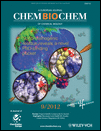
CHEMBIOCHEM
Advancing the frontiers of biochemical knowledge.CHEMBIOCHEM is a premier interdisciplinary journal published by WILEY-V C H VERLAG GMBH, dedicated to advancing knowledge in the fields of Biochemistry, Molecular Biology, Molecular Medicine, and Organic Chemistry. With an impactful presence since its inception in 2000 and a convergence through to 2024, the journal has established itself as a vital resource for researchers, professionals, and students alike, evidenced by its notable quartile rankings in 2023—Q2 in Biochemistry, Molecular Biology, and Molecular Medicine, and Q1 in Organic Chemistry. While it does not currently offer Open Access options, CHEMBIOCHEM remains a respected platform for disseminating high-quality research, reflected in its Scopus rankings, where it holds a credible position in various chemistry categories. By fostering innovative studies and discussions, CHEMBIOCHEM aims to contribute to the understanding and advancement of biochemical and molecular principles critical to contemporary science and healthcare.

Journal of the Iranian Chemical Society
Elevating Chemical Knowledge with Every PublicationThe Journal of the Iranian Chemical Society, published by SPRINGER, is a prominent academic journal dedicated to advancing the field of chemistry. With an ISSN of 1735-207X and an E-ISSN of 1735-2428, this quarterly journal has been contributing valuable research from 2006 to 2024. Situated in Germany, it serves as a vital platform for chemists and researchers to disseminate their findings, particularly within the miscellaneous chemistry category, where it ranks in the Q3 quartile for 2023. Despite its current lack of open access options, the journal maintains a solid presence in the academic community, evidenced by its Scopus ranking of #165 out of 408 in general chemistry and a commendable 59th percentile. The journal's objective aims to foster innovation and collaboration in chemical research, making it an essential resource for professionals and students keen on pioneering developments in the field. As a subscriber, you will gain insights into cutting-edge research that drives the future of chemistry.
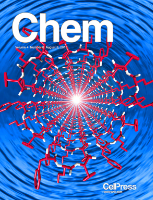
Chem
Empowering Global Access to Chemical KnowledgeChem, published by CELL PRESS, is a renowned academic journal that has rapidly established itself as a leading platform for cutting-edge research in diverse areas such as biochemistry, chemical engineering, materials chemistry, and environmental chemistry. Released under the ISSN 2451-9294, this esteemed journal has achieved an impressive Q1 category ranking across multiple disciplines in 2023, highlighting its significant impact and prominence within the academic community. With a strong focus on innovative studies and interdisciplinary approaches, Chem fosters a vibrant dialogue among researchers, professionals, and students, making it an indispensable resource for those seeking to advance their knowledge and contribute to the evolving field of chemistry. As an open access journal, it aims to democratize knowledge, ensuring that critical research is accessible to a global audience. With its headquarters based in Cambridge, MA, it continues to lead the charge in the dissemination of pivotal findings that shape our understanding of chemical sciences.
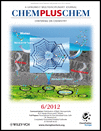
ChemPlusChem
Pioneering Interdisciplinary Research in ChemistryChemPlusChem is a premier journal published by WILEY-V C H VERLAG GMBH, dedicated to the vibrant field of chemistry. With an ISSN of 2192-6506 and an impressive Q1 ranking in Scopus's 2023 category for miscellaneous chemistry, this journal serves as a significant platform for the dissemination of high-quality research and innovative findings. Since its inception in 2012, ChemPlusChem has fostered interdisciplinary collaborations, encapsulating a wide array of topics within chemistry that facilitate scientific advancement and education. The journal features a robust open access system, enabling extensive visibility for authors while providing easy-to-access resources for researchers, professionals, and students globally. Located in Weinheim, Germany, ChemPlusChem reflects international standards and ambitions, striving to enrich the global scientific community through rigorous research and engaging scientific discourse.

ACS Bio & Med Chem Au
Advancing the frontiers of biochemistry and medicinal chemistry.ACS Bio & Med Chem Au, published by the esteemed American Chemical Society, stands at the forefront of interdisciplinary research within the realms of biochemistry, drug discovery, pharmaceutical sciences, and molecular biology. With an impressive Impact Factor indicative of its rigorous academic standards and significant contributions to the field, this open-access journal is committed to disseminating high-quality research that drives innovation and advancements in biosciences and medicinal chemistry. Since its inception in 2021, the journal has rapidly earned recognition, achieving a commendable Q1 ranking in multiple categories, including Biochemistry, Drug Discovery, and Pharmaceutical Science, while also making strides in Molecular Biology. Researchers, professionals, and students alike can explore pioneering studies that bridge gaps between laboratory research and clinical applications, fostering collaborative efforts towards novel therapeutic strategies. With a focus on enhancing accessibility and engagement within the scientific community, ACS Bio & Med Chem Au is poised to impact the future of biomedical research significantly.
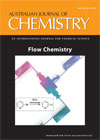
AUSTRALIAN JOURNAL OF CHEMISTRY
Elevating the standards of chemistry research worldwide.The Australian Journal of Chemistry, with an ISSN of 0004-9425 and an E-ISSN of 1445-0038, is a distinguished publication from CSIRO PUBLISHING, dedicated to advancing the field of chemistry since its inception in 1948. Based in Australia, this journal serves as a platform for original research articles, reviews, and innovative studies that encompass a wide spectrum of chemical disciplines, aiming to foster communication and collaboration among researchers globally. Despite its Q3 ranking in the Chemistry (Miscellaneous) category and standing at rank #236 in Scopus’ general chemistry classification, it remains an essential resource for professionals and students seeking to stay informed about emerging trends and discoveries in chemistry. The journal does not offer open access, emphasizing the premium quality of peer-reviewed content that adheres to rigorous academic standards. By bridging theory and practice, the Australian Journal of Chemistry continues to play a crucial role in shaping the future of chemical sciences.
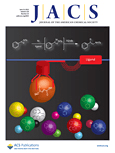
Journal of the American Chemical Society
Pioneering Research in Modern ChemistryJournal of the American Chemical Society (JACS), published by the American Chemical Society, stands as a pivotal publication in the field of chemistry, facilitating the dissemination of significant research findings since its inception in 1879. With an impressive impact factor and esteemed rankings placing it in the Q1 quartile across various categories—including Biochemistry, Catalysis, and Colloid and Surface Chemistry—JACS continues to serve as a vital resource for scientists, professionals, and students alike. Researchers choose JACS for its rigorous peer-review process, ensuring high-quality content that shapes the landscape of modern chemistry. The journal's extensive scope encompasses pivotal advancements and innovative methodologies, reflecting the evolving dynamics of chemical research. With access options being traditional subscription-based, it remains crucial for institutions and individuals to engage with its latest issues to stay at the forefront of chemical science advancement.